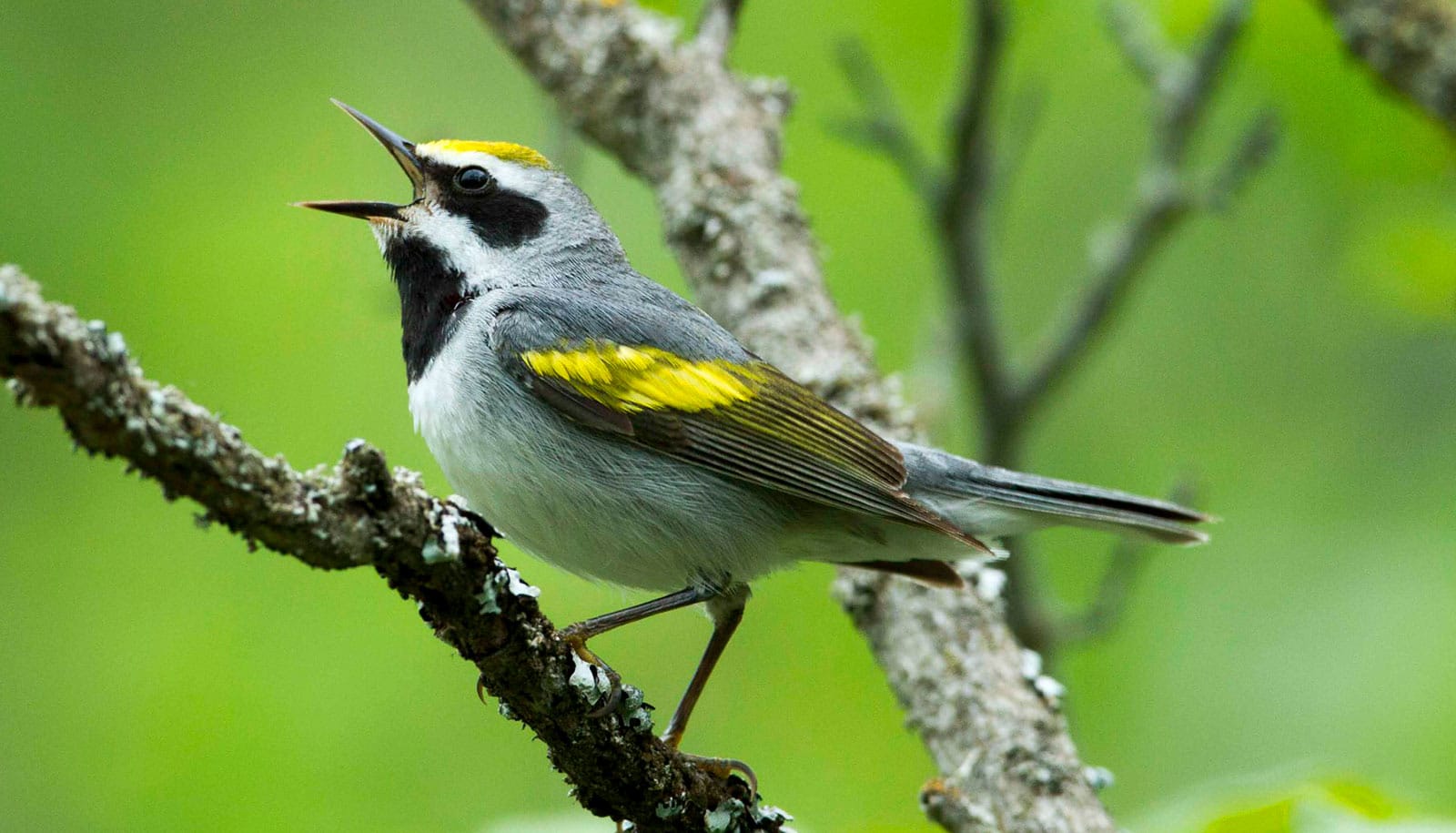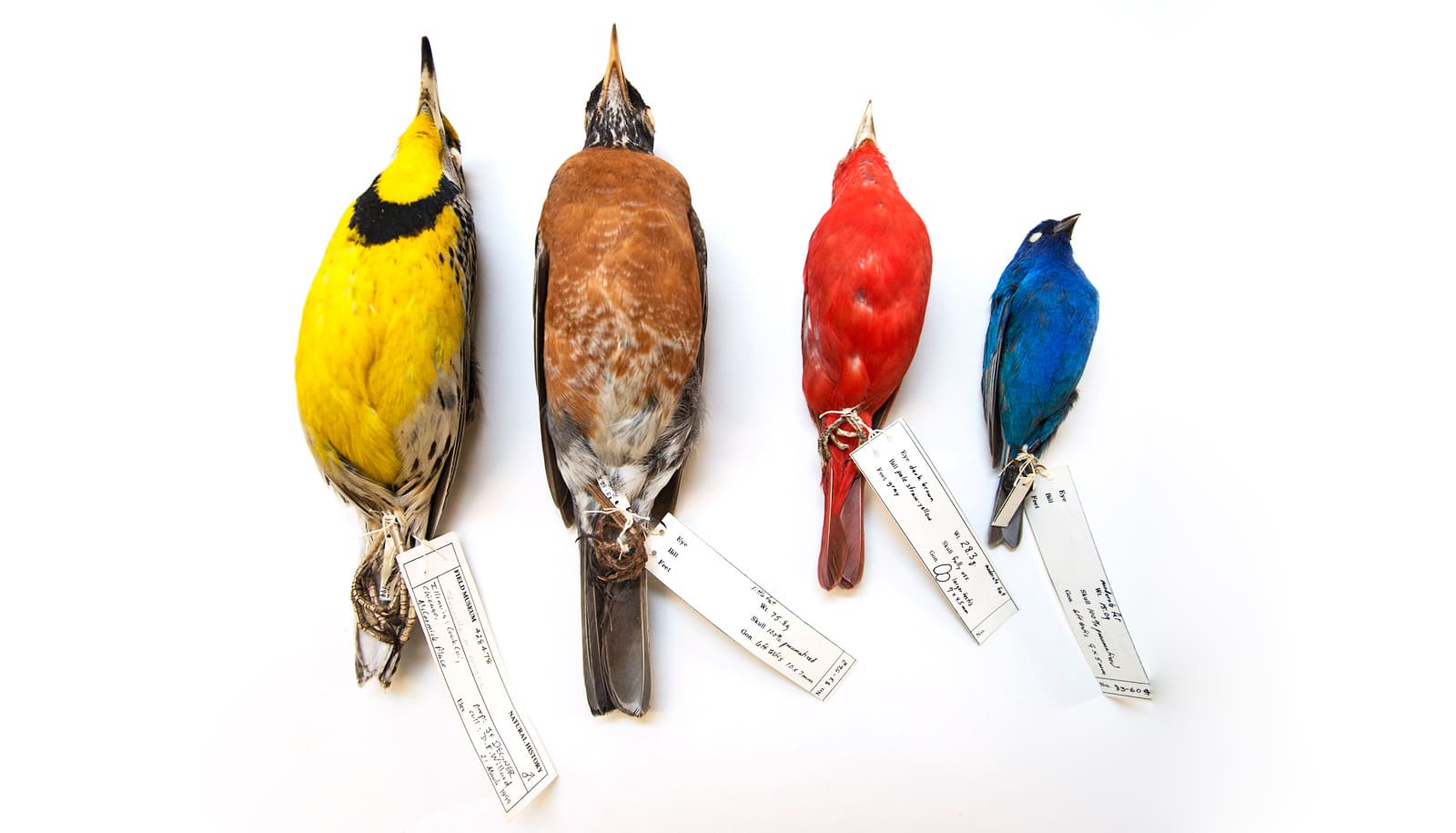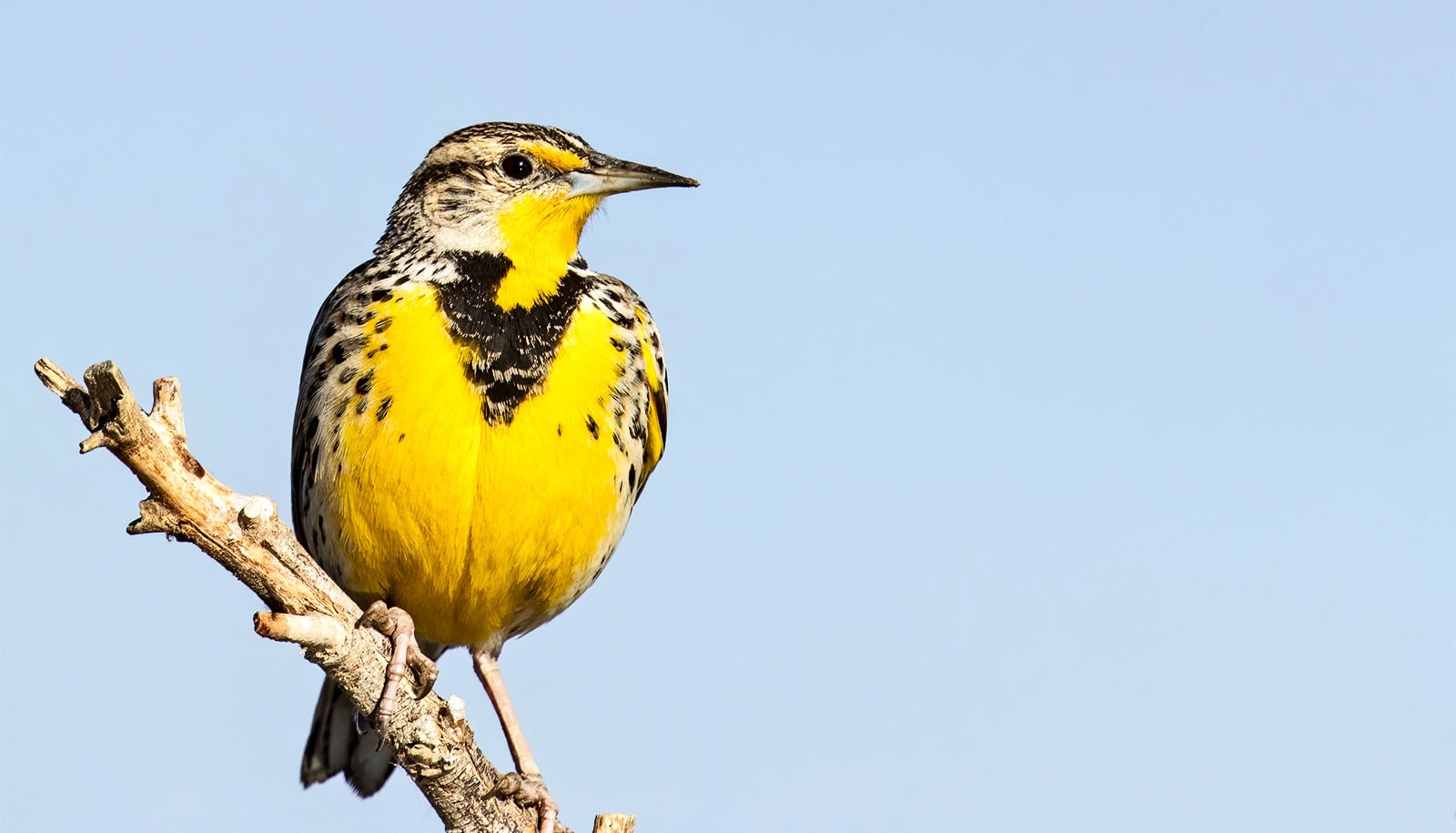An incredibly rare hybrid warbler with mismatched color patterns has let researchers disentangle the genetic drivers of two traits that usually come as a package deal.
A new study describing the peculiar bird and pinpointing the location in the genome that controls the black face mask and the black throat patch in blue-winged and golden-winged warblers. The work appears online in the journal Ecology.
“Golden-winged warblers have both a black face mask and a black throat patch, while blue-winged warblers have neither,” says Marcella Baiz, postdoctoral researcher at Penn State and first author of the study. “When individuals of each species mate with each other, almost all of their hybrid offspring have matched traits, so both black plumage traits are present or both are absent. But we captured this very weird bird that looks almost entirely like a golden-winged warbler but is missing the black throat patch.”
This bird may be attractive to females of both species because it has qualities of both, or to neither.
The researchers believe this unique combination occurs in less than 0.5% of the hybrid warblers. To their knowledge, this type of hybrid had been previously documented only once in a bird that was collected in 1934 and described in 1951 from a museum collection.
“We originally found this bird thanks to a tip from a local birder who works at Shaver’s Creek Environmental Center,” says David Toews, professor of biology at Penn State and an author of the study. “He suggested that a nearby area seemed like good warbler habitat and also uploaded observations of warblers onto the app eBird, which scientists can use in their research. We went to scout the location when we spotted this unique and exciting bird. We carefully captured the bird so we could document its plumage, took a blood sample so we could sequence its genome, and then released it.”
In a previous study, the researchers sequenced the genomes of blue- and golden-winged warblers and their hybrids and identified a small region that drives the black coloration in these birds upstream of the Agouti-signaling protein (ASIP) gene. But because the two traits are almost always inherited together, it was unclear if ASIP regulated the traits together or separately.
“Because we already had genome sequencing data from the parent species and hybrids with the matched face and throat color, sequencing the genome of the mismatched bird allowed us to separate out the genetic regions underlying the face mask versus the throat patch,” says Baiz.

The team confirmed that the previously identified region is connected to the black throat patch, and also identified a new location—nearby, but further upstream in the genome—that they believe is connected to the black face mask. For black pigment to occur in these birds, the two copies (one on each chromosome) must have originally come from the golden-winged warbler, suggesting that these are “recessive” traits. Having one or both copies from the blue-winged warbler in these spots results in no face mask or throat patch.
“More than a hundred years ago, a biologist named John Treadwell Nichols hypothesized that the black throat coloration was a recessive trait,” says Toews. “Later, when Kenneth Parkes described the rare hybrid in 1951, he suggested that if throat and mask color were controlled separately, they would need to be linked in some way or located very close together on the genome. Parkes described his theory as a ‘genetic problem for future study,’ and we were able to confirm both theories using modern genetic tools.”
The researchers suggest that the locations they identified might be within two separate promoter regions for the ASIP gene, which turn the gene on or off in different contexts. Because they are located so close to each other on the chromosome, the promoters would usually be inherited together—even if genetic material is shuffled between chromosomes during reproduction—which would explain why most hybrids carry both or neither of these black plumage traits. The mismatched bird, however, was likely a result of an extremely rare instance where this was not the case, followed by several generations of backcrossing with golden-winged warblers.
“If coloration genes in warblers have a similar genetic architecture, with multiple promoters controlling where pigment is deposited, it’s easy to see how just a few mutations could produce a variety of different color patterns among these songbird species,” says Baiz. “This may help explain why there are so many different species of warblers with such a diversity of colors.”
Because a warbler’s coloration is an important cue for behaviors like mating, it is possible there are implications of the mismatched hybrid bearing only one of the traits. For example, it may be attractive to females of both species because it has qualities of both, or to neither. The researchers hope to observe this bird in the future and determine if it has a mate, and future research linking plumage traits to reproductive success would clarify these implications.
“We have now observed this bird two years in a row, so it has survived at least two migration events,” says Toews. “This study and the story of how we found this bird is an excellent example of how birders and citizen scientists can make a real difference in research.”
Support for the research came from the Penn State Eberly College of Science and the Huck Institutes of the Life Science.
Source: Penn State


